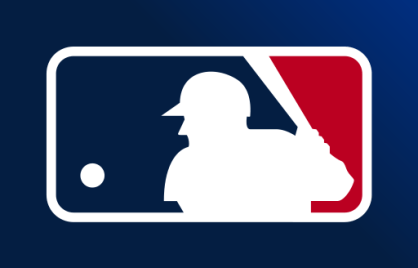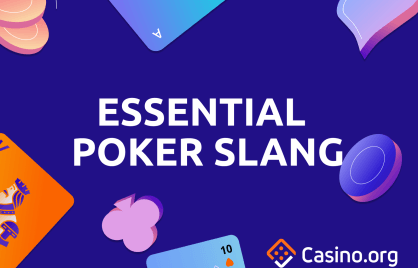Sports Betting Terms: Essential Primer for Winning Strategies

Summarize this post
Sports Betting Terms: What You’ll Learn
- Essential Sports Betting Terms: Gain a clear understanding of critical terms such as juice, point spread, moneyline, and more, which are vital for making informed bets.
- Professional Betting Strategies: Learn how expert gamblers utilize terminology to increase profitability, including insights on line shopping, contrarian betting, and the importance of closing line value (CLV).
- Key Numbers and Betting Dynamics: Discover the significance of key numbers in sports betting, especially in the NFL, and how they impact betting strategies.
- Types of Bets Explained: Understand various betting options, from prop bets to futures and exotic bets, allowing you to diversify your betting portfolio.
- Advanced Betting Techniques: Explore advanced concepts such as in-game wagering, middling, and the strategies used by professional handicappers to enhance your betting success.
When it comes to sports betting, understanding the terminology is key to navigating the complex world of gambling. In this primer, we’ll explore critical sports betting terms, explain what they mean, and share insights on how professional gamblers utilize them to maximize their winnings.
Juice/Vigorish (Vig)
Juice, also known as vigorish (vig), refers to the commission that sportsbooks collect on bets, typically around 10 percent on point spreads and totals. The bookmaker sets the point spread or over/under (OU) line with the goal of attracting equal money on both sides, ensuring a profit regardless of the outcome. In recent years, it’s been observed that baseball juice has climbed as high as 20 percent on the moneyline.
Understanding juice is crucial because it impacts your overall profitability as a bettor. For example, at -110 odds, you must win 52.38% of your wagers to break even. Higher vig means you need a higher winning percentage to make a profit.
Point Spread
The point spread is a wager on the margin of victory. If a point spread is set at -7, the favored team must win by eight points or more for you to win the bet. Conversely, the underdog can cover the spread by either winning outright or losing by less than seven points. If the favorite wins by exactly seven, it results in a push, meaning your bet is refunded.
Understanding point spreads is essential for evaluating which teams are favored and how likely they are to cover the spread based on past performances and current statistics.

Image Credit: janews/Shutterstock
OU Line/Total
The OU line (Over/Under line) refers to a bet on the total number of points scored by both teams combined. For instance, if the line is set at 50 and you choose the OVER, at least 51 points must be scored to win. Conversely, if the total score is 49 or less, the UNDER bet wins.
Mastering how to read OU lines can help you assess game dynamics and make more informed betting decisions.
Push
In betting terminology, a push occurs when the outcome is exactly the same as the line. This ties the game and results in all wagers being refunded, as if the bet never took place. Recognizing how pushes impact your bets can aid in better managing your bankroll.
Moneyline
A moneyline bet is a wager on which team will win outright, without any point spread involved. However, it’s crucial to understand that moneyline odds aren’t always straightforward. For example, if the Yankees are -150 against the Red Sox, you must risk 150 to win 100. Conversely, if the Red Sox are +130, risking100 could yield a profit of 130 plus your stake.
Recent trends suggest that juice on moneylines has risen to 20%, making it costly for bettors. Understanding the nuances of moneylines can greatly affect your betting outcomes.
Pro Betting Advice
Expert gamblers emphasize the importance of understanding juice. When the odds are set at -120, the required winning percentage jumps to 54.55%—a substantial increase that can significantly impact your profitability.
One common advice often given to novice bettors is to “always buy the hook.” This means paying extra to gain a half-point advantage. For instance, if you want to bet on a spread of -3 but prefer -2.5, the price may jump from -110 to -130. Such moves can drastically alter your break-even rate, making it much harder to secure profits in the long run.
Buying the Hook
“Buying the hook” means paying an additional 20-25 cents for a half-point advantage. The term originated in hands-on betting practices, where oddsmakers would use apostrophes to differentiate half points.
While it may seem like a minor adjustment for enhanced odds, financially, it can feel deceptive for bettors. Regularly buying the hook can lead to significant cumulative losses over time.
Key Numbers
In NFL betting, certain point margins are labeled key numbers due to their frequent occurrence in game outcomes. The five prominent margins since 1989 include:
- 3 points: 15.3% of outcomes (1,426 games)
- 7 points: 8.7% (809 games)
- 6 points: 6.0% (554 games)
- 10 points: 5.7% (531 games)
- 4 points: 5.1% (479 games)
Understanding these key numbers can refine your betting strategy, especially when deciding whether to buy the hook.

Image Credit: AnnaStills/Shutterstock
Betting Splits
Betting splits depict the percentage of total bets placed versus the percentage of money wagered on a particular side. This data can help bettors identify contrarian opportunities and track sharp money (wagering made by experienced gamblers).
Understanding betting splits helps you gauge public opinion and potentially uncover advantageous betting opportunities.
Contrarian Bets
Contrarian betting involves wagering against the public’s prevailing sentiment. The theory suggests that the public tends to lose more than they win. Professional bettors often fade the majority of bets, finding value in required discrepancies.
For instance, if 70% of bets are on Team A but 70% of the money is on Team B, seasoned bettors may see value in wagering on Team B as the “sharp” play.
Sharp Bet
A sharp bet is one placed by a professional gambler or a highly respected handicapper. Understanding what distinguishes a sharp bet from a recreational one can guide your own betting practices.
Line Shopping
Line shopping is the process of comparing sportsbooks to secure the best odds. Whether you’re a sharp gambler wagering a substantial sum or a recreational bettor placing a modest wager, finding the best line can increase your win rates by 1-2%.
Utilizing multiple sportsbooks can frequently provide better odds and enhance overall profitability.
Parlay
A parlay combines multiple bets into one ticket. All selections must win, or the bet is lost. Although parlays offer enticing payouts—about 10-1 on a four-team parlay at -110 odds—the risk is considerably higher than with individual bets. Recreational bettors often engage in parlays for thrill, but they should understand the inherent risk involved.
Recreational Bettor
A recreational bettor is someone who bets for fun, often risking discretionary income, such as wagering on favorite teams or popular games. These bettors primarily seek entertainment and may place bets like $20 on a parlay during a game broadcast.
Action
Action refers to any money wagered on a game. Many recreational bettors feel compelled to have “action” on games to boost their rooting interest.
Systems, Trends, Angles
Modern bettors often rely on models and databases to identify inefficiencies in betting lines. Strategies can include examining specific performance metrics for teams or players. Gamblers frequently utilize statistical analysis tools like p-value, z-score, and ROI to test their systems.
Whale/High Roller
A whale or high roller is a bettor who wagers large sums, often in five figures or more per game. Casinos typically shower them with comps, including luxury accommodations and fine dining. However, larger bets do not always mean wiser wagers.
Lookahead Lines
Lookahead lines are odds posted by sportsbooks a week or more before the games. These lines may have lower limits but can offer valuable insight into how professionals anticipate games will unfold.

Image Credit: AnnaStills/Shutterstock
Opening and Closing Lines
Opening lines are the first odds posted for a game; some consider lookahead lines as openers, while others define the opening as the lines released after the previous week’s games. In contrast, closing lines reflect the final odds just before a game starts. Understanding both types of lines helps bettors identify line movement and shifts in public perception.
CLV (Closing Line Value)
CLV (Closing Line Value) is the difference between the line you bet on and the closing line. For example, if you bet -8 and it closes at -10, you achieve +2 points of CLV. Recognizing CLV can provide insights into your betting decisions and overall performance.
Prop Bets
Prop bets or proposition bets focus on specific outcomes during a game, often relating to player performances. These are especially popular among fantasy sports enthusiasts and typically feature numerous options during major events.
Futures Bets
Futures bets involve wagers on long-term outcomes, such as which team will win a specific division or the championship. Futures can also extend to season-long player totals.
Exotic Bets
Exotic bets are novelty wagers, often tied to high-profile events like the Super Bowl. These “whacky wagers” may include the length of the National Anthem or other unusual scenarios, and they often come with low limits.
In-Game Wagering
In-game wagering refers to placing bets on adjusted lines during a game. Sportsbooks commonly charge additional vigorish for this option, which can lead to fewer profitable outcomes if a bettor isn’t careful.
Middle
The middle approach involves betting both extremes of a line move in hopes that the game lands in between. If you bet OVER 235 and the line rises to 242, you could place an UNDER bet, hoping for a final score that lands within the established range. Weather conditions often drive line movements that create middling opportunities.
Professional Handicapper/Sports Service
A professional handicapper or sports service provides betting picks aimed at giving gamblers an edge, functioning similarly to a “stockbroker for sports bettors.” This insight can help you decide who to trust when seeking additional information or guidance.
TL;DR Sports Betting Terms Summary
- Juice (Vig): The sportsbook’s commission which impacts profitability.
- Key Bet Types: Understand point spreads, totals, and moneylines to navigate betting effectively.
- Key Numbers: Margins like 3 and 7 dominate outcomes in the NFL.
- Buying the Hook: Costly and may not yield significant return on investment.
- Contrarian Bets: Betting against public opinion can be lucrative when approached thoughtfully.
- Sharps vs. Recreational Bettors: Pros prioritize value while recreational bettors seek entertainment.
- Line Shopping & CLV: Essential tactics to enhance your betting success.
- Various Bet Types: Props, futures, and exotics can offer intrigue but usually come with lower long-term value.
- Whales: Bettors that wager large amounts, but often lack sharp insights.
- In-Game & Middling: Advanced strategies for experienced bettors.
Understanding these key sports betting terms and how professional gamblers utilize them will enhance your betting acumen, enabling you to make informed decisions and increase your chances of winning. Remember, the world of sports betting is dynamic and ever-changing, so staying updated on terminology and strategies is vital to your success.
Happy betting!
Title Image Credit: SeventyFour/Shutterstock


